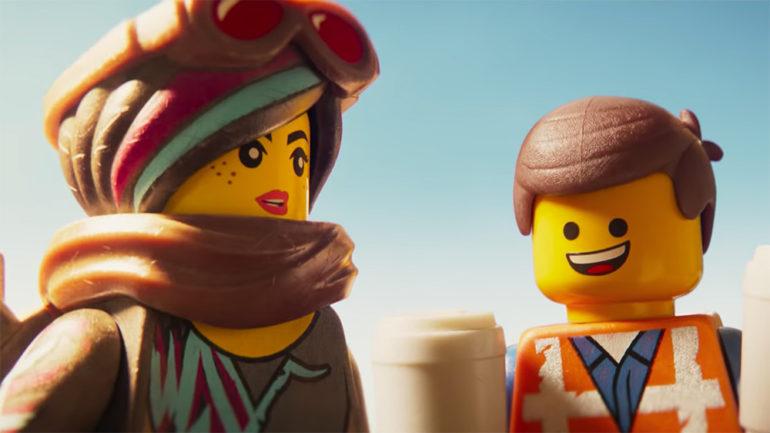Why ‘Lego Movie 2’ Stumbled at the Box Office
By Rebecca Rubin
LOS ANGELES (Variety.com) – Heading into the weekend, Warner Bros. expected everything would be awesome. Instead, executives on the Burbank lot are feeling a pain not unlike the sharp sting you suffer from stepping on a tiny plastic toy.
The studio’s animated sequel “The Lego Movie 2: The Second Part” fell short of expectations, earning $34.4 million when it opened in 4,303 venues . It was enough to top domestic box office charts, but it arrived $15 million behind even modest estimates from both the studio and independent tracking services, and almost 50% behind the start of its predecessor, 2014’s “The Lego Movie.” It’s not an out-and-out disaster by any means, but for a movie that cost $100 million plus millions more in marketing and distribution fees, it certainly is cause for concern for the future of the franchise based on the popular toy brand.
Despite positive reviews, “The Lego Movie 2” had one of the lowest openings in the cartooned series, ahead of just 2017’s spinoff “The Lego Ninjago Movie” ($20.4 million). It would have been rare to pull off the kind of $69 million debut that “The Lego Movie” surprised with in 2014, but it’s never a good sign for a franchise to see this kind off drop off. After all, sequels are supposed to spark even more enthusiasm as its fanbase grows. And moreover, these movies only get costlier to make. “The Lego Movie 2” is no exception, being the most expensive installment so far.
Insiders at Warner Bros.’ are attributing the decline in ticket sales mainly to diminished enthusiasm for the series in terms of older audiences. The first iteration tapped into nostalgia as the charming and humorous take on the famous toy brand drew moviegoers of all ages. “The Lego Movie 2,” meanwhile, played more like a traditional animated flick geared towards children. The proof is in the numbers. The original film pulled in a broader crowd and saw 41% of ticket-buyers under the age of 18. “The Second Part” skewed younger, and as a result, over 47% of moviegoers were below 18 years old. Ticket prices are less expensive for kids, and without the kind of must-see elements that warrant 3D or Imax screens, it’s causing theaters to reel in less dough.
The family friendly aspect does provide at least one benefit. The studio is hoping to pick up steam next weekend when kids are out of school for President’s Day. But when it comes to films geared toward a younger audience, the box office is only getting more competitive from here. Universal’s “How to Train Your Dragon: The Hidden World” hits theaters in two weeks, while Disney-Marvel’s “Captain Marvel” with Brie Larson follows not far behind.
The franchise does have A-list stars like Chris Pratt, Elizabeth Banks, and Will Arnett voicing its main characters, and each new entry is only pulling in bigger names — Tiffany Haddish, Maya Rudolph, and “Brooklyn Nine-Nine” star Stephanie Beatriz joined the voice cast this go-around. Bigger names means bigger social media followings to promote the movie on the likes of Twitter and Instagram (Chris Pratt has almost 30 million followers alone). But from the looks of the latest follow-up, the studio may want to reconsider how much it’s shelling out for talent, especially for an animated movie that doesn’t have the added benefit of being able to put their faces on posters.
Industry analysts point to the one-two punch of “The Lego Batman Movie” and “The Lego Ninjago Movie,” both of which were released in 2017, as cause for concern. “The Lego Batman Movie,” the first of the two spinoffs, became a hit and ended its box office run with $312 million worldwide. “Ninjago,” which arrived in theaters just a few months later, didn’t fare as well and Warner Bros. learned the hard way that there can, indeed, be too much of a good thing. It tapped out with $123 million worldwide and left many questioning why the studio decided to debut both in the same year. However, box office sages suggest that waiting five years before the direct sequel and instead dropping two offshoots back-to-back might have been a red flag.
“Absence making the heart grow fonder is a rare situation,” said Jeff Bock, a box office analyst with Exhibitor Relations. “It’s not the case for kids. They grow out of things quickly.”
Recent animated fare like “Hotel Transylvania 3: Summer Vacation,” “Incredibles 2,” and “The Grinch” all benefitted from significant overseas followings that helped justify pricier budgets. That hasn’t been the case with this particular franchise. Aside from “Ninjago,” each entry in the “Lego” series has seen its domestic haul dwarf international grosses. “The Lego Movie 2” seems to be be following suit, launching with a tepid $18.1 million in 63 foreign markets. Without international appeal to help buoy ticket sales, it becomes increasingly harder for studios to justify greenlighting new sequels.

